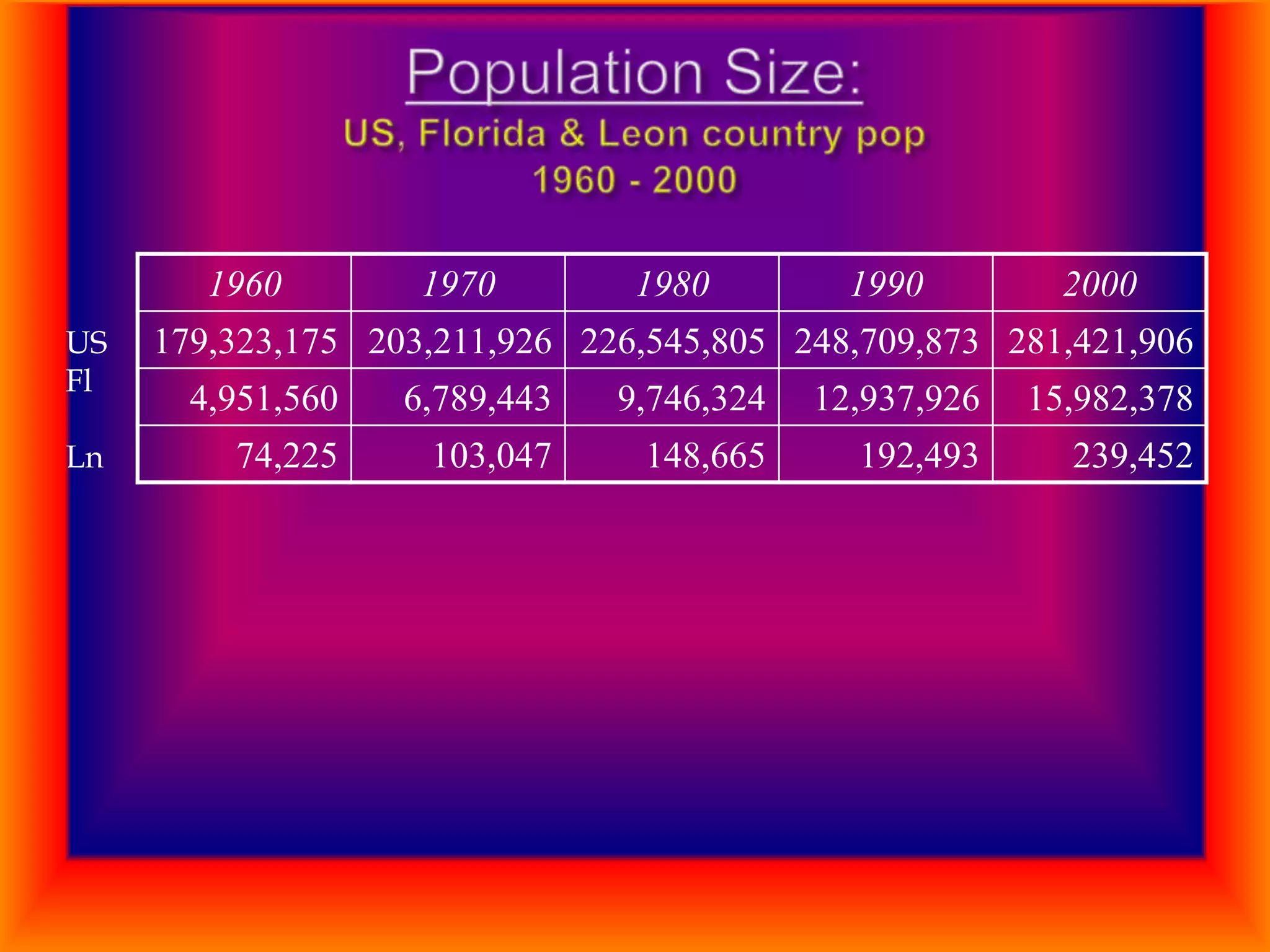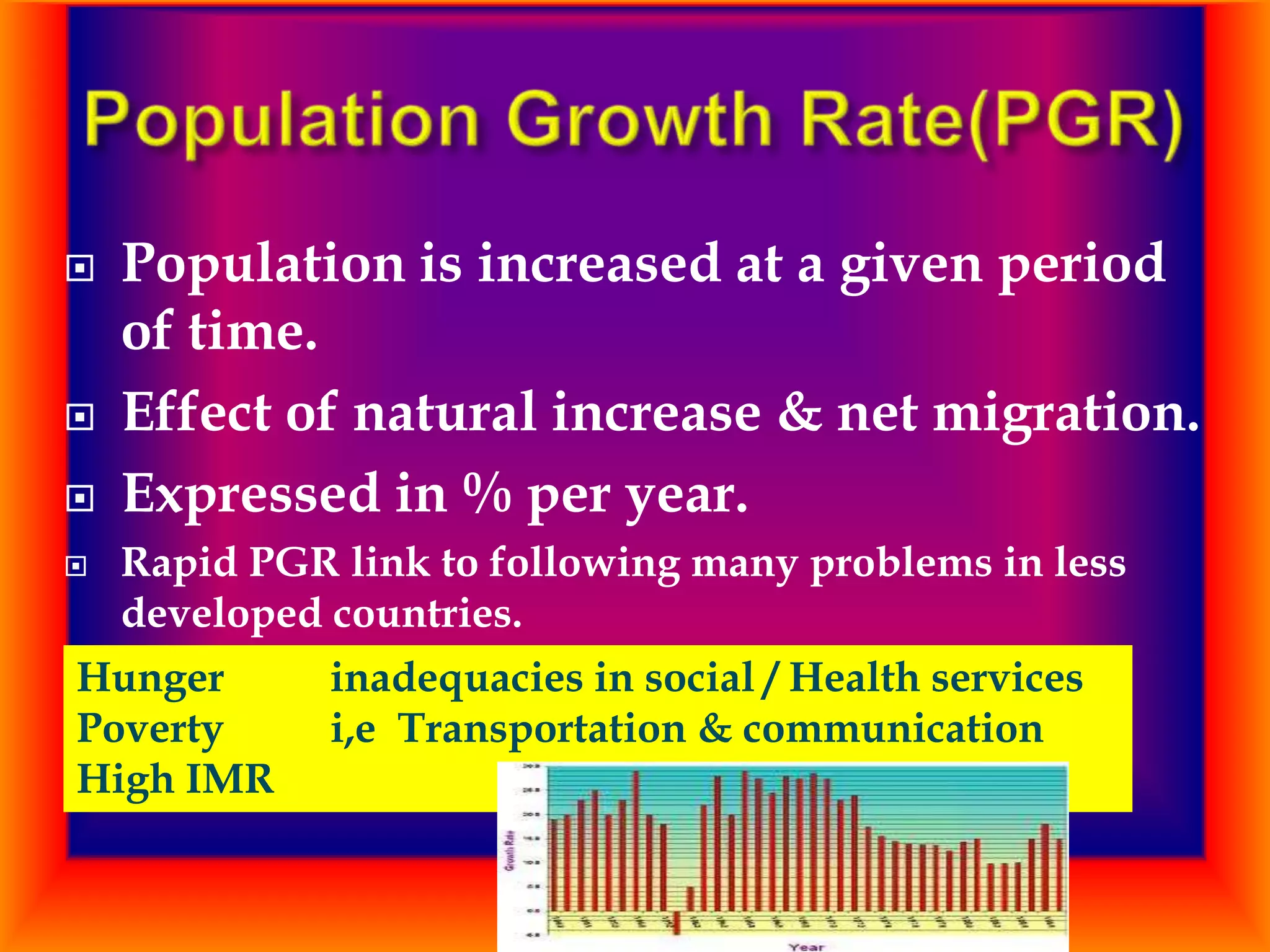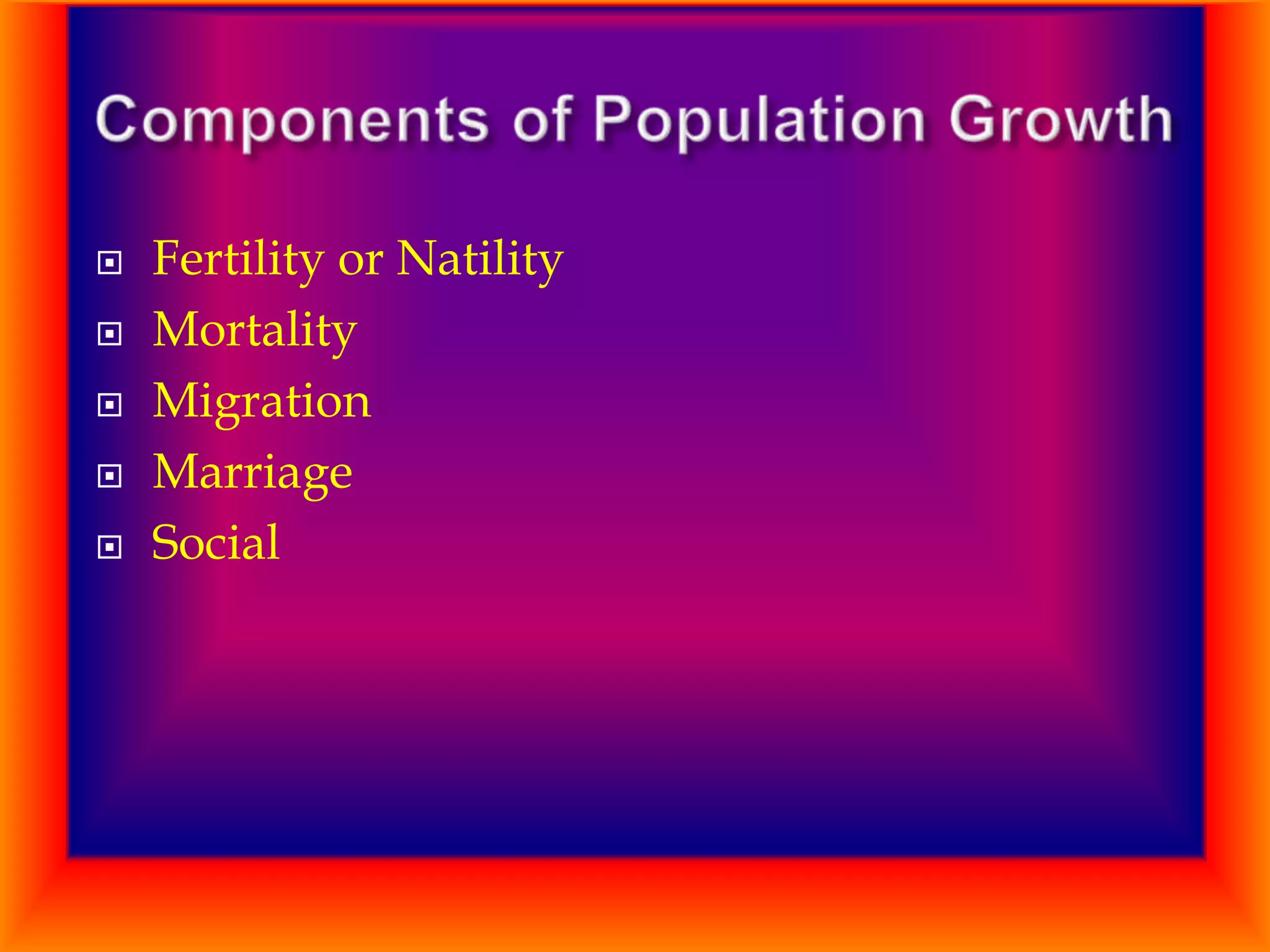Demography is the scientific study of human populations and changes within them. A population's size and composition can change due to births, deaths, and migration. Demographers use a balancing equation to analyze population change over time based on births, deaths, and net migration. Important demographic processes include fertility, mortality, marriage, education, and social mobility. Population growth rates vary globally and influence issues like poverty, health, education, and resource availability.




















